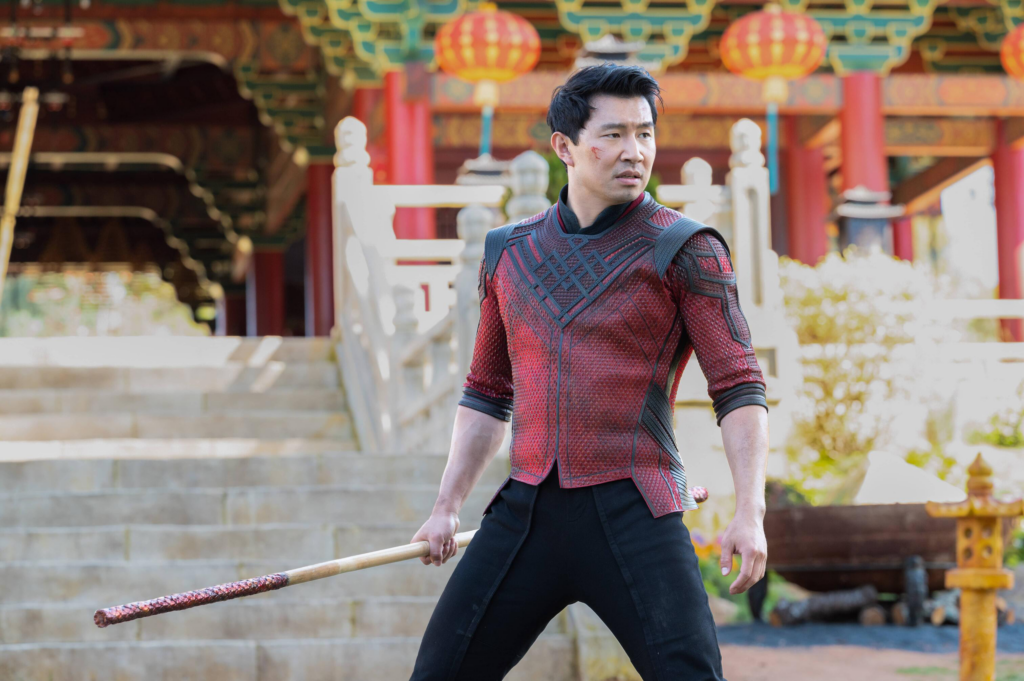★★★★☆
The writers and directors at Marvel Studios have experimented for years to find the formula for the perfect superhero movie, and “Shang-Chi and the Legend of the Ten Rings” combines Marvel’s signature ingredients near flawlessly. With poetic fight sequences and brilliantly developed characters, “Shang-Chi” breathes new life into Marvel’s cinematic universe.
The movie opens to a sweeping field and a regal but intimidating horseman who wields the titular Ten Rings. The horseman annihilates an entire opposing army with a wave of his mystical rings over narration in Mandarin. This opening sequence sets an impressive precedent for well-choreographed fight scenes, which the rest of the film solidifies.
The remaining minutes of the movie tick by quickly, with well-written dialogue and classic Marvel wit pushing the plot forward. The action scenes throughout “Shang-Chi” are also technical wonders. One flashback scene shows the villain, Xu Wenwu (Tony Chiu-Wai Leung), in a lyrical martial arts battle in a bamboo forest.
Marvel’s CGI has regularly been lauded for its quality, and the animated dragons and villains in “Shang-Chi” are no exception. The final battle features beautiful cinematography and emotional deaths, and the end scene is everything one would hope for from a Marvel closer: exciting and high stakes while still delivering a satisfying and heartwarming conclusion. The two end-credit scenes continue to push Phase Four of Marvel Studios forward, introducing new complications and plotlines for future films.

Narration in Mandarin is used throughout the film in an effort to reflect the multilingualism of the cast and production team. Additionally, several scenes in the movie include dialogue in Mandarin, a first for Marvel that adds nuance to the interactions between characters, such as the paternal relationship between Wenwu and Shang-Chi.
While “Shang-Chi” refreshes the Marvel Cinematic Universe (MCU) with its addition of Mandarin narration, the film does not shy away from utilizing familiar plot devices. The plot mostly follows a treasure-hunt storyline that is standard in fantasy media, and it has characteristic Marvel elements, with cameos from fan favorites and callbacks to previous films. Although the action always excites, tired tropes like the fridged woman, in which a character’s corruption arc begins with the death of a loved one, still make an appearance.
The script establishes emotional connections and nuanced dynamics between characters incredibly well. Viewers have a sense of who these characters are and what motivates them far before the final act rolls around. For example, the character of Katy (Awkwafina), Shang-Chi’s oldest friend, demonstrates a consistent curiosity and protectiveness of her friend throughout the film that truly solidifies her in the MCU, despite the fact that she was not in the original comics.
These dynamics are ultimately what bring viewers to care about the characters in “Shang-Chi.” Actor Simu Liu’s Shang-Chi is a tortured and caring young man running from his morally gray past and its future consequences. Wenwu shines as a sympathetic villain, as both a threat to the hero and as a heartbroken man wanting to fix his family. The moral and familial struggles between Shang-Chi and his superpowered relatives elicit empathy and interest, perhaps even more than other Marvel sob stories like the death of Tony Stark in “Avengers: Endgame.”
“Shang-Chi” attempts to amend Marvel’s past offenses in the original comic. The source material was rife with anti-Asian racism in the form of stereotypical depictions and yellow peril sentiments. Director Destin Daniel Cretton nixed these antiquated caricatures to some extent by eliminating the villain Fu Machu, but the film is still problematic in that it portrays problematic stereotypes, like the fetishization of Asian women. Shelly Tan of The Washington Post also criticized the movie’s inclusion of “martial arts and themes of filial piety,” wondering if such things are mandatory in Western media centered around Asian culture.
Despite its flaws, “Shang-Chi” is still breaking box office records with its stellar action sequences and classic, appealing superhero formula. The film may not be perfect, but “Shang-Chi and the Legend of the Ten Rings” is setting an intriguing stage for Marvel’s “Eternals,” directed by Oscar winner Chloé Zhao and set to hit theaters Nov. 5, 2021.













